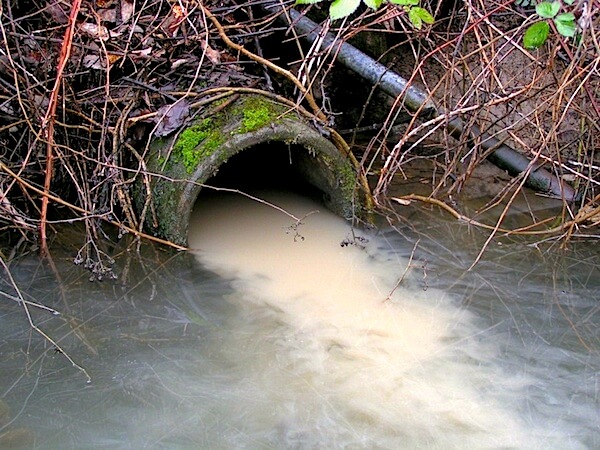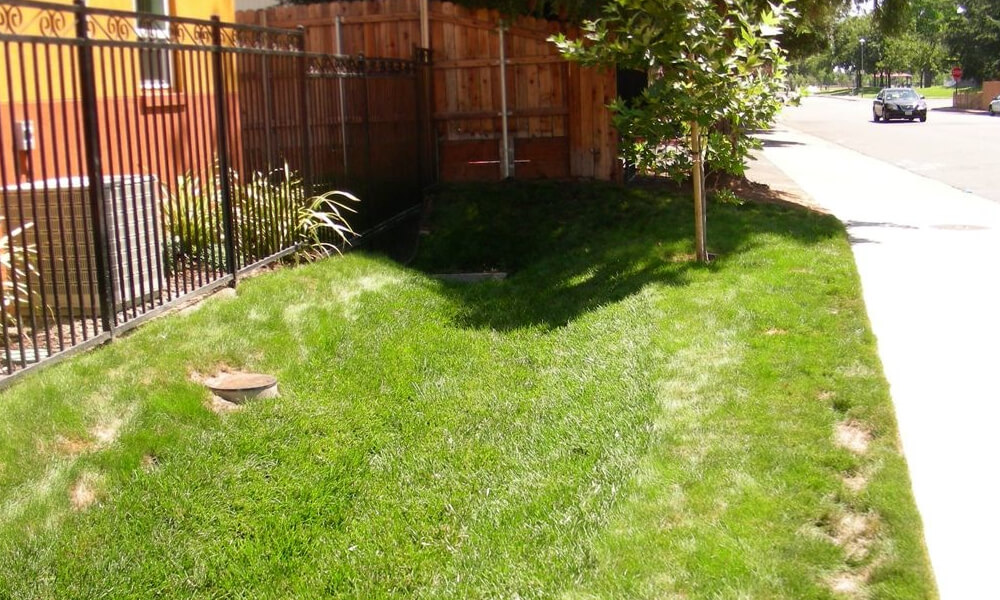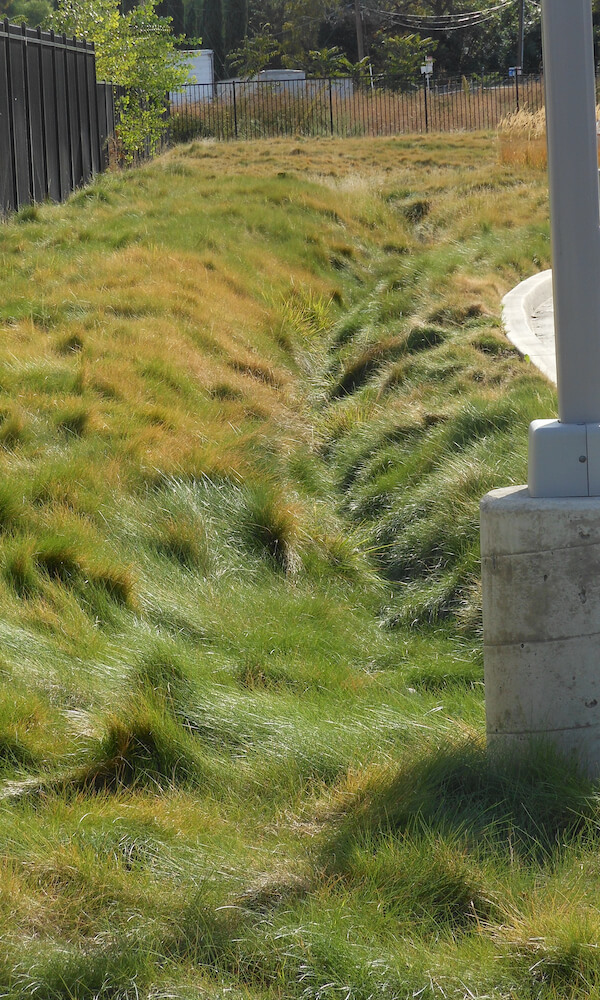
For decades, Stormwater has been routed to drain inlets (DI’s) and piped underground to either a treatment plant or the nearest river. While efficient at purveying water quickly from a parking lot, burying pipes deep in the ground is expensive. Buried pipes that “flow to the river” are environmentally destructive because they quickly move pollutants picked up from impervious drive surfaces, building roofs and fertilized lawns to our natural waterways. Adding warning signs at DI’s is good, but eliminating direct pollution pathways to the river is far better.
Drain to stream is a poor choice
Complex mechanical solutions can be deployed to meet more strict Stormwater requirements, but these mitigations are expensive and because they are buried in the ground, do not add apparent value to the users because they never see it.
The beauty of natural Stormwater management is that instead of DI’s, PVC pipe, charcoal filter vaults and manhole covers, the mitigating “equipment” includes trees, grass, rocks, soil, pervious pavers and interesting topography – elements that most people consider amenities.

By integrating the civil engineering, landscape, and architectural design at the very beginning of a building project, it is possible to achieve a much lower impact design that is far better at meeting regulated Stormwater requirements, at a lower cost.
Instead of burying expensive Stormwater pipes deep in the ground, it is better to “daylight” the site drainage paths with careful grading, vegetation, rain gardens and bioswales. Controlling the Stormwater above ground and encouraging natural percolation into the soil, shifts the stormwater burden from swollen urban creeks, to the site’s own landscape as it transforms into a rain garden that welcomes the rain.
Surface stormwater flow moves through engineered sloped bioswales.

The water is slowed with carefully selected vegetation that begins fixing pollutants on site. Tree species, especially some evergreens that are thirsty for the winter rains, are placed strategically along the swales to pull the water though their substantial root system into their structure above. Like pipe sizes, tree species are calculated for storage capacity, soils are calculated for retention, and grasses calculated for containment absorption.
The most important concept is that Design integration must start at the beginning. The the clearly stated goal: “no Stormwater pipes underground” needs to be understood by the owner, architect, civil engineer and landscape architect. Building roofs and downspouts need to be planned at the beginning not mitigated with pipes at the end of a design. The site plan must anticipate the water flow route and the landscape architect needs to have enough space to fit the essential “equipment” of trees and grasses so that they can “function” optimally.

Several urban areas have adopted Best Management Practices (BMP) and published guidelines for engineering natural Stormwater management.
The California Stormwater Quality Association has published Best Management Practice (BMP) handbooks, The Sacramento and South Placer Counties have adopted a design manual for natural Stormwater design.
This can be accessed at The California Stormwater Quality Association: www.casqa.org

